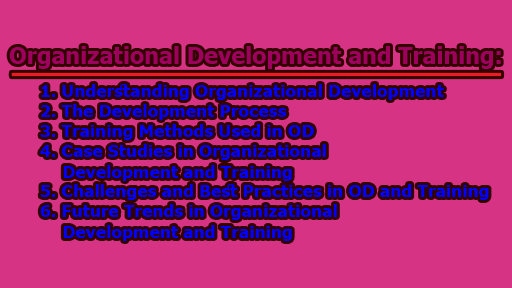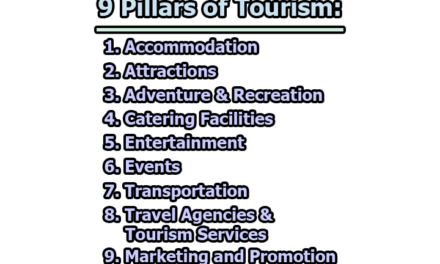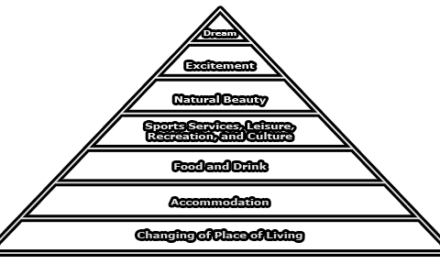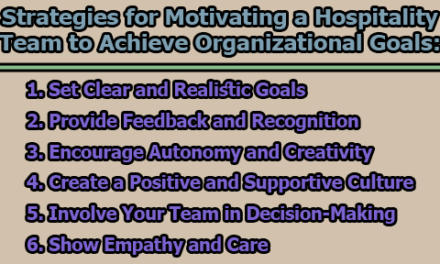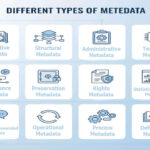Organizational Development and Training:
Organizational Development (OD) and Training are vital components that empower modern organizations to evolve, adapt, and excel in an ever-changing business landscape. As competition intensifies, and markets become increasingly dynamic, the need for fostering a culture of continuous improvement and employee development has become imperative for sustained success. Organizational Development entails a planned and systematic approach to enhance an organization’s overall effectiveness by optimizing its structure, culture, systems, and most importantly, its human capital. Accompanied by Training, which equips employees with the necessary skills and knowledge, OD plays a pivotal role in ensuring that organizations can navigate challenges, capitalize on opportunities, and remain resilient in the face of uncertainty. In the rest of this article, we will explore the understanding of organizational development, the development process, and various training methods used to facilitate OD.
1. Understanding Organizational Development:
Organizational Development (OD) is a systematic and planned approach aimed at improving the effectiveness and performance of an organization. It involves the application of behavioral science principles and practices to enhance various aspects of the organization, including its culture, structure, systems, and human resources. The primary objective of OD is to create a healthy and thriving work environment that fosters growth, innovation, and adaptability, thereby enabling the organization to achieve its strategic goals and stay competitive in the ever-changing business landscape.
1.1 Definition of Organizational Development:
The definition of Organizational Development has evolved over time, reflecting its multifaceted nature. At its core, OD can be understood as a deliberate and collaborative effort to bring about positive and sustainable changes within an organization. These changes are typically aimed at enhancing the organization’s capacity to respond effectively to internal and external challenges, improving employee engagement and performance, and maximizing overall organizational effectiveness.
Organizational Development is not a one-size-fits-all approach; rather, it is tailored to the specific needs and context of each organization. It involves a systematic diagnosis of organizational issues, followed by the design and implementation of interventions to address these challenges and capitalize on opportunities for improvement.
1.2 Historical Background:
The roots of Organizational Development can be traced back to the 1940s and 1950s when social scientists and psychologists began to explore ways to improve organizational performance and employee satisfaction. One of the early pioneers in the field was Kurt Lewin, whose work laid the foundation for modern-day change management theories. However, it was in the 1960s and 1970s that Organizational Development gained significant momentum as a distinct field of study and practice.
The surge in interest in OD during this period can be attributed to several factors, including a growing recognition of the impact of organizational culture on performance, the need for organizations to adapt to rapidly changing environments, and the desire to improve employee well-being and job satisfaction.
1.3 Theories of Organizational Development:
Various theories and models have been developed to guide the practice of Organizational Development. Three prominent theories that have shaped the field are:
1.3.1 Lewin’s Change Management Model:
Kurt Lewin’s Change Management Model is one of the earliest and most influential theories in OD. It is based on the idea that organizations exist in a state of equilibrium or “unfreezing,” and any change requires a process of moving from the existing state to a new state through a “change” phase, followed by “refreezing” to stabilize the new state.
Lewin’s three-step model involves:
a) Unfreezing: Creating the motivation for change by identifying and communicating the need for change and overcoming resistance.
b) Change: Implementing the desired changes effectively, which may involve restructuring, introducing new processes, or altering the organizational culture.
c) Refreezing: Stabilizing the changes by reinforcing new behaviors, norms, and practices to make them the new “norm.”
1.3.2 Action Research Theory:
Action Research is a participative and collaborative approach to organizational change and development. Developed by Kurt Lewin and further refined by other scholars, the theory emphasizes the involvement of employees and stakeholders throughout the change process.
In Action Research, the OD practitioner and organizational members work together to identify problems, develop interventions, and collect data on the outcomes of these interventions. This continuous feedback loop allows for ongoing adjustments and improvements in the change process, ensuring that the solutions are tailored to the specific needs of the organization.
1.3.3 Systems Theory:
Systems Theory views organizations as complex and interconnected systems, where various components and sub-systems interact with each other and the external environment. Changes in one part of the system can have ripple effects throughout the organization. This theory emphasizes the importance of understanding the organization as a whole rather than focusing solely on individual components.
In the context of OD, Systems Theory highlights the interconnectedness of different aspects of the organization, such as structure, culture, and processes. It suggests that successful organizational development requires considering the holistic impact of interventions and changes to ensure alignment and synergy among various elements.
1.4 Importance of Organizational Development:
Organizational Development holds immense significance for modern organizations, offering a range of benefits that contribute to their sustained success and competitiveness.
1.4.1 Enhancing Organizational Performance:
OD interventions are designed to optimize an organization’s structure, processes, and human resources to improve overall performance. By addressing inefficiencies, streamlining workflows, and enhancing communication and collaboration, OD initiatives can lead to increased productivity, reduced costs, and better utilization of resources.
1.4.2 Fostering Employee Engagement:
Engaged employees are more committed to their work, display higher levels of job satisfaction, and are more likely to contribute proactively to the organization’s success. OD practices that involve employees in decision-making, provide opportunities for growth and development, and create a positive work environment contribute to higher levels of employee engagement and retention.
1.4.3 Facilitating Change and Adaptation:
In today’s rapidly changing business landscape, organizations must be agile and adaptable to remain competitive. Organizational Development equips organizations with the tools and strategies to navigate change effectively. By fostering a culture that embraces innovation and continuous improvement, OD helps organizations anticipate and respond to market shifts, technological advancements, and other external factors.
2. The Development Process:
The development process in Organizational Development (OD) involves a systematic and well-planned approach to identify, address, and improve organizational issues and challenges. It encompasses a series of interconnected stages, each playing a critical role in guiding the organization toward positive change and growth. Understanding and effectively implementing each step is vital to the success of OD interventions.
2.1 Diagnosing Organizational Issues:
The first step in the development process is to diagnose the organization’s current state by identifying areas of concern and potential for improvement. This phase involves gathering relevant information, understanding the organizational culture, and assessing strengths and weaknesses.
2.1.1 Data Collection Methods:
Data collection methods are employed to gather information about the organization’s performance, processes, and challenges. Common data collection techniques include surveys, interviews, focus groups, observation, and analyzing existing organizational data and performance metrics. The data collected provides valuable insights into the organization’s functioning and serves as the foundation for subsequent interventions.
2.1.2 Analyzing Organizational Culture:
Organizational culture plays a crucial role in shaping employee behavior, decision-making processes, and overall organizational performance. Analyzing the prevailing culture involves understanding the shared values, norms, beliefs, and behavioral patterns that guide employees’ actions. This analysis helps identify whether the current culture supports or hinders the organization’s goals and whether cultural change is necessary for successful OD initiatives.
2.1.3 Identifying Strengths and Weaknesses:
Assessing the organization’s strengths and weaknesses involves identifying areas where the organization excels and those that require improvement. Strengths represent valuable resources that can be leveraged, while weaknesses indicate areas that need attention and development. Understanding both aspects is essential for devising effective interventions that build on existing strengths and address critical weaknesses.
2.2 Planning OD Interventions:
Based on the diagnosis, the next step is to plan and design OD interventions that target the identified organizational issues. This stage involves setting clear goals, selecting appropriate intervention strategies, and creating detailed implementation plans.
2.2.1 Goal Setting:
Clear and specific goals are crucial to the success of OD interventions. Goals should align with the organization’s overall strategic objectives and be measurable to track progress and outcomes. Setting realistic and achievable goals ensures that the interventions are focused and impactful.
2.2.2 Selecting Intervention Strategies:
There is a wide range of OD intervention strategies available, and the selection of the most appropriate ones depends on the nature of the identified issues and the organization’s unique context. Intervention strategies can include team-building exercises, leadership development programs, process redesign, diversity and inclusion initiatives, and more. The chosen interventions should align with the organization’s goals and culture.
2.2.3 Formulating Implementation Plans:
Developing comprehensive implementation plans is essential to ensure the smooth execution of the selected OD interventions. These plans include defining roles and responsibilities, allocating resources, establishing timelines, and outlining communication strategies. The implementation plans should consider potential challenges and develop contingency measures to address unforeseen obstacles.
2.3 Implementing OD Interventions:
The implementation phase involves putting the planned OD interventions into action, effectively executing the strategies designed to address organizational issues.
2.3.1 Change Management Strategies:
Effective change management is critical during the implementation of OD interventions. It involves engaging stakeholders, communicating the need for change, and creating a sense of urgency and shared commitment to the interventions. Change management strategies help minimize resistance and ensure that employees understand and embrace the proposed changes.
2.3.2 Overcoming Resistance to Change:
Resistance to change is a common challenge during OD interventions. Employees may resist new processes, procedures, or cultural shifts due to fear, uncertainty, or a sense of loss. Overcoming resistance requires open communication, involving employees in the change process, and addressing concerns and feedback proactively.
2.3.3 Communication and Engagement:
Transparent and consistent communication is essential throughout the implementation phase to keep employees informed about the progress of the interventions, their role in the change process, and the expected outcomes. Employee engagement is encouraged through involvement in decision-making and by fostering a culture of collaboration and ownership.
2.4 Evaluating OD Outcomes:
The final stage of the development process is evaluating the outcomes of the OD interventions to assess their effectiveness and impact on the organization.
2.4.1 Measuring Effectiveness:
Measuring the effectiveness of OD interventions involves comparing the actual outcomes with the desired goals set at the beginning of the process. Key performance indicators (KPIs) and other quantitative and qualitative metrics are used to gauge the success of the interventions.
2.4.2 Feedback Mechanisms:
Feedback mechanisms are essential to gather insights from employees and stakeholders about their experiences with OD interventions. Surveys, focus groups, and one-on-one interviews are commonly used to collect feedback. Feedback helps identify areas of improvement and informs future OD initiatives.
2.4.3 Making Continuous Improvements:
Based on the evaluation results and feedback, organizations can make necessary adjustments and improvements to their OD initiatives. Continuous improvement is central to the OD process, ensuring that the organization adapts to changing circumstances and sustains its developmental efforts over time.
3. Training Methods Used in OD:
Training is a fundamental aspect of Organizational Development (OD) that plays a crucial role in enhancing employee skills, knowledge, and competencies. A well-designed and effective training program not only equips employees with the necessary tools to excel in their roles but also contributes to a positive organizational culture and fosters continuous improvement. In this section, we will delve into the various training methods commonly used in OD, exploring their characteristics, advantages, and applications.
3.1 Traditional Training Approaches:
3.1.1 Instructor-Led Training (ILT):
Instructor-Led Training (ILT) is a tried-and-true training method that involves a skilled instructor delivering content to a group of learners in a classroom setting. The instructor serves as a facilitator, guiding participants through the learning material and encouraging engagement through discussions and exercises. ILT allows for immediate clarification of doubts and encourages collaborative learning among participants.
One of the significant advantages of ILT is its ability to cater to diverse learning styles, as the instructor can adapt the training delivery based on the participants’ needs. This method is particularly effective for conveying complex topics, such as technical skills, where learners benefit from direct interaction and real-time feedback. However, ILT can be time-consuming and may pose logistical challenges, especially for organizations with geographically dispersed teams.
3.1.2 On-the-Job Training (OJT):
On-the-Job Training (OJT) is a hands-on training approach where employees learn and develop their skills while performing their regular job tasks. More experienced employees or mentors guide and coach less experienced colleagues, providing real-time instruction and feedback. OJT allows employees to gain practical experience and apply their learning immediately to their job responsibilities.
OJT is highly effective for skill-based training, as employees can observe and practice tasks in their actual work environment. This method not only boosts learning retention but also integrates learning seamlessly into work processes. Additionally, OJT fosters a sense of camaraderie and mentorship within the organization. However, OJT requires skilled trainers which may impact productivity during the training period.
3.1.3 E-Learning and Online Training:
E-Learning and Online Training leverage digital technology to deliver training content to employees via online platforms. This method provides flexibility, as employees can access training materials anytime and anywhere, allowing them to learn at their own pace. E-Learning modules may include videos, interactive quizzes, simulations, and other multimedia elements.
Online training offers several advantages, making it a popular choice for organizations with remote or dispersed teams. It is scalable and cost-effective, as training materials can be easily distributed to a large number of learners simultaneously. Furthermore, the use of Learning Management Systems (LMS) enables organizations to track learners’ progress, conduct assessments, and generate reports on training effectiveness. However, E-Learning requires employees to be self-motivated and disciplined in their learning, as there is limited face-to-face interaction with instructors.
3.2 Experiential Learning:
3.2.1 Role-Playing and Simulation:
Role-playing and simulations are experiential learning methods that involve creating scenarios that mimic real-life workplace situations. Employees take on specific roles and engage in simulated interactions, allowing them to practice and refine their skills in a safe environment. Role-playing enhances communication, problem-solving, and conflict-resolution skills.
Simulation exercises provide a realistic experience without real-world consequences, making them particularly effective for learning complex processes or decision-making skills. For example, in the healthcare industry, medical professionals may participate in simulated medical emergencies to enhance their critical thinking and decision-making abilities. Experiential learning methods bridge the gap between theory and practice, facilitating the transfer of knowledge to the workplace effectively.
3.2.2 Outdoor Training and Adventure Learning:
Outdoor training takes experiential learning a step further by conducting learning activities and exercises in outdoor settings away from the workplace. Adventure learning involves incorporating challenging and adventurous activities, such as rock climbing, ropes courses, or wilderness experiences, to build teamwork, leadership, and problem-solving skills.
Outdoor training and adventure learning encourage participants to step out of their comfort zones and face unfamiliar situations. Participants must work together to overcome obstacles, fostering teamwork, resilience, and adaptability. These experiences provide valuable lessons that participants can apply in their work environment, promoting personal and professional growth.
3.2.3 Team Building Exercises:
Team building exercises aim to improve collaboration, communication, and trust among team members. These exercises can range from simple ice-breaker activities to more complex team challenges and problem-solving tasks. Team building activities often involve team members working together to achieve a common goal, encouraging them to communicate effectively, leverage individual strengths, and build mutual respect.
Team building exercises are often used in conjunction with other training methods to reinforce learning and build a cohesive and high-performing team. They contribute to a positive work environment and help align team members toward shared objectives.
3.3 Coaching and Mentoring:
3.3.1 Individual Coaching:
Individual coaching involves one-on-one sessions between a skilled coach and an employee. The coach provides personalized guidance, feedback, and support to help the employee develop specific skills or overcome challenges. Individual coaching is typically tailored to address the unique needs and growth areas of the employee.
This method is particularly beneficial for leadership development, career advancement, and addressing specific performance issues. Individual coaching creates a trusting and confidential space for employees to explore their strengths and areas for improvement. Coaches work collaboratively with employees to set goals, develop action plans, and monitor progress over time.
3.3.2 Group Coaching:
Group coaching involves coaching sessions conducted with a small group of employees who share common developmental goals or challenges. The coach facilitates discussions, encourages peer support, and fosters collective learning and problem-solving. Group coaching provides a supportive environment where participants can learn from each other’s experiences and perspectives.
Group coaching can be more cost-effective than individual coaching, as it allows multiple employees to benefit from the same coaching session. It also builds a sense of camaraderie and shared responsibility for growth within the group. Group coaching is often used for leadership development, team effectiveness, and cultivating a learning culture within the organization.
3.4 Leadership Development Programs:
3.4.1 Developing Leadership Competencies:
Leadership development programs focus on nurturing essential leadership competencies and skills in employees who have leadership potential or currently hold leadership positions. These programs may include workshops, seminars, case studies, and interactive exercises to enhance leadership capabilities, such as decision-making, communication, emotional intelligence, and strategic thinking.
Leadership development programs are critical for succession planning and ensuring that the organization has a talent pool of qualified individuals ready to fill key leadership positions as they become available. By investing in leadership development, organizations can create a strong and capable leadership team that can effectively steer the organization toward its goals.
3.4.2 Succession Planning:
Succession planning is a strategic process that identifies and develops internal employees to assume key leadership roles within the organization in the future. Succession planning programs often combine training, coaching, and mentoring to prepare employees for leadership responsibilities. The identification of potential successors is based on factors such as skills, performance, potential, and alignment with organizational values and culture.
Effective succession planning ensures the organization’s continuity and stability by proactively preparing for leadership transitions. By nurturing and grooming internal talent, organizations can reduce the risk associated with leadership vacancies and maintain a strong leadership pipeline.
3.5 Diversity and Inclusion Training:
3.5.1 Creating an Inclusive Work Environment:
Diversity and inclusion training aims to promote an inclusive work environment where all employees feel valued, respected, and empowered to contribute their unique perspectives and talents. This training typically involves raising awareness about diversity-related issues, fostering empathy and understanding, and promoting cultural competence among employees.
Creating an inclusive work environment is essential for boosting employee morale, engagement, and productivity. When employees feel included and appreciated, they are more likely to be committed to the organization’s success and collaborate effectively with colleagues from diverse backgrounds.
3.5.2 Managing Unconscious Bias:
Unconscious bias training addresses implicit biases that individuals may hold, which can influence decision-making, interactions, and workplace dynamics. These biases may be based on factors such as race, gender, age, or other characteristics, and can impact employee perceptions, evaluations, and opportunities.
Managing unconscious bias training helps employees recognize and mitigate biases, ensuring fair and equitable treatment of all colleagues. By increasing awareness and sensitivity to biases, organizations can foster a more inclusive and equitable work environment.
3.6 Technology-Enabled Training:
3.6.1 Virtual Reality (VR) Training:
Virtual Reality (VR) training immerses employees in simulated environments, allowing them to experience realistic scenarios and practice skills without real-world consequences. VR training is particularly effective for high-risk or complex tasks and professions, such as healthcare, aviation, and manufacturing.
VR training enhances engagement and retention, as learners actively participate in the learning process. It also provides valuable data on learners’ performance and areas for improvement. VR technology offers a safe and controlled environment for employees to build expertise and confidence in challenging situations.
3.6.2 Gamification of Learning:
Gamification involves incorporating game elements, such as points, badges, leaderboards, and rewards, into the learning experience. Gamified training motivates employees and creates a sense of achievement as they progress through levels and challenges.
Gamification increases engagement, promotes healthy competition, and makes learning enjoyable. By leveraging elements of gamification, organizations can increase learner participation and motivation, leading to better learning outcomes.
3.7 Continuous Learning and Skill Development:
3.7.1 Microlearning:
Microlearning is a learning approach that delivers small and bite-sized chunks of content, focusing on specific topics or skills. These bite-sized modules are easy to digest, allowing employees to learn in short bursts and apply the knowledge immediately.
Microlearning is particularly suitable for just-in-time learning, refresher training, and addressing specific performance gaps efficiently. It is well-suited for the busy and fast-paced work environment, enabling employees to access relevant information quickly and conveniently.
3.7.2 Learning Management Systems (LMS):
Learning Management Systems (LMS) are software platforms that facilitate the administration, delivery, tracking, and reporting of training programs. LMS allows organizations to centralize training materials, monitor learners’ progress, and assess the effectiveness of training initiatives.
LMS streamlines training management enables personalized learning paths and supports continuous learning and development. With features such as course catalogs, progress tracking, and automated notifications, LMS ensures that employees have access to the right training resources at the right time.
4. Case Studies in Organizational Development and Training:
In this section, we will explore three case studies that highlight successful implementations of Organizational Development and Training initiatives in different companies. These case studies demonstrate how organizations can address specific challenges and achieve positive outcomes through strategic planning and effective training methods.
4.1 Company A: Transforming Organizational Culture:
Company A is a mid-sized technology firm that was facing challenges with its organizational culture. The company had experienced rapid growth, leading to a lack of cohesion and alignment among employees. The prevailing culture was characterized by siloed departments, low employee engagement, and resistance to change. The leadership team recognized the need for a cultural transformation to foster a more collaborative and innovative work environment.
Understanding the importance of Organizational Development, Company A embarked on a comprehensive transformation program. The development process began with diagnosing the existing culture and identifying the areas that required improvement. Data was collected through surveys, focus groups, and one-on-one interviews to gain insights into employee perceptions and experiences.
Based on the diagnosis, the company set clear goals for the cultural transformation, emphasizing the need for increased collaboration, open communication, and a shared sense of purpose. To achieve these objectives, the following training methods were employed:
- Instructor-Led Training (ILT): The company conducted workshops and training sessions to promote cross-functional collaboration and communication skills among employees. These workshops focused on effective communication techniques, active listening, and conflict resolution.
- Team Building Exercises: To break down silos and foster teamwork, Company A organized team-building activities that encouraged employees from different departments to work together towards common goals. These exercises helped build trust and mutual understanding among team members.
- Leadership Development Programs: Recognizing that leadership plays a pivotal role in shaping organizational culture, Company A implemented a leadership development program for its managers. This program emphasized the importance of leading by example, promoting a positive culture, and embracing change.
- Continuous Learning: To reinforce the desired cultural values, the company introduced continuous learning initiatives, including microlearning modules on cultural transformation and organizational values. These modules were accessible through the organization’s Learning Management System (LMS), allowing employees to engage in ongoing self-directed learning.
Through these training interventions and a concerted effort by the leadership team, Company A successfully transformed its organizational culture. Employee engagement and collaboration improved significantly, resulting in increased innovation and productivity. The positive cultural shift also contributed to a more cohesive and motivated workforce, positioning Company A for continued success in the competitive technology market.
4.2 Company B: Implementing a Leadership Development Program:
Company B, a large multinational corporation, recognized the importance of developing its leadership talent to ensure long-term success and sustainability. The company identified a need to build a robust leadership pipeline and equip its current and future leaders with the necessary competencies to navigate a rapidly changing business landscape.
To address this need, Company B implemented a comprehensive Leadership Development Program. The program aimed to develop a diverse pool of leaders and cultivate a leadership culture that values continuous learning and growth.
The development process began with a thorough assessment of leadership competencies and identification of potential leadership candidates. Company B utilized a combination of internal assessments and external benchmarking to identify high-potential employees with the qualities and attributes required for leadership roles.
Based on the assessment results, the selected employees were invited to participate in the Leadership Development Program, which incorporated the following training methods:
- Individual Coaching: Each participant was assigned an experienced executive coach who provided personalized guidance and support throughout the program. The coaching sessions focused on enhancing leadership capabilities, addressing development areas, and setting career goals.
- Group Coaching and Peer Learning: The program included group coaching sessions where participants came together to discuss leadership challenges, share experiences, and learn from one another. Peer learning provided an opportunity for cross-functional collaboration and diverse perspectives.
- Leadership Workshops and Seminars: Company B organized leadership workshops and seminars led by industry experts and thought leaders. These workshops covered various leadership topics, including strategic thinking, change management, and effective communication.
- Action Learning Projects: To apply their learning in real-life scenarios, participants were assigned action learning projects that addressed critical business challenges. These projects required collaboration across departments and encouraged innovative problem-solving.
- Feedback and Assessment: Throughout the program, participants received regular feedback through 360-degree assessments and performance evaluations. This feedback facilitated self-awareness and provided insights into areas for further growth.
The Leadership Development Program proved to be a resounding success. Participants reported increased confidence, improved decision-making capabilities, and stronger leadership skills. As a result of the program’s success, Company B observed a higher retention rate among participants and an overall improvement in leadership effectiveness across the organization.
4.3 Company C: Enhancing Diversity and Inclusion:
Company C, a leading consumer goods company, recognized the importance of fostering a diverse and inclusive work environment. The organization understood that diversity and inclusion are essential drivers of innovation, creativity, and employee engagement.
Company C initiated a series of training initiatives focused on enhancing diversity and inclusion within the workplace. The goal was to create a work environment where employees from different backgrounds feel valued, respected, and empowered to contribute their unique perspectives.
The development process began with a thorough assessment of the organization’s diversity and inclusion practices. Surveys, focus groups, and employee feedback sessions were conducted to gain insights into the current state of diversity and inclusion within the company.
Based on the assessment findings, Company C developed a multi-faceted training approach that included the following methods:
- Diversity and Inclusion Training Workshops: The company conducted interactive workshops that explored the value of diversity, the impact of unconscious bias, and strategies for building an inclusive culture. These workshops were attended by employees at all levels, fostering a shared understanding of the importance of diversity and inclusion.
- Managing Unconscious Bias Training: To address unconscious biases that may influence decision-making and behavior, Company C organized training sessions specifically focused on managing unconscious bias. These sessions helped employees recognize and mitigate biases to ensure fair treatment and opportunities for all employees.
- Inclusive Leadership Development: Company C implemented a leadership development program that emphasized inclusive leadership behaviors. The program provided leaders with the tools and skills to lead diverse teams effectively and create an inclusive work environment.
- Employee Resource Groups (ERGs): The organization established Employee Resource Groups to provide a platform for employees from diverse backgrounds to connect, share experiences, and contribute to company initiatives. ERGs played a crucial role in driving diversity and inclusion efforts across the organization.
- Diversity Awareness Campaigns: Company C launched diversity awareness campaigns to celebrate cultural diversity, raise awareness about various cultures, and promote inclusivity. These campaigns included events, workshops, and cultural celebrations throughout the year.
As a result of these training initiatives, Company C observed a positive shift in the organizational culture. Employee engagement and satisfaction improved, and collaboration among diverse teams became more seamless. The inclusive work environment led to increased creativity and innovation, ultimately contributing to the company’s overall success and competitive advantage.
5. Challenges and Best Practices in OD and Training:
Organizational Development (OD) and training initiatives are critical components of organizational growth and success. However, they come with their fair share of challenges. In this section, we will explore five common challenges faced in OD and training and discuss best practices to overcome them effectively.
5.1 Overcoming Resistance to Change:
Challenge: Resistance to change is a common barrier in any OD initiative. Employees may resist new processes, technologies, or cultural shifts due to fear of the unknown, comfort with the status quo, or perceived threats to their roles.
Best Practices:
- Communicate the Vision: Transparently communicate the reasons for the change, the vision for the future, and the potential benefits to the organization and employees. Address concerns and provide a clear roadmap for the transition.
- Involve Employees: Involve employees in the change process by seeking their input, feedback, and ideas. Engage them in problem-solving and decision-making, as it fosters ownership and commitment to the change.
- Provide Training and Support: Offer training programs to equip employees with the skills and knowledge required for the change. Provide ongoing support and coaching to help employees navigate the transition.
- Celebrate Small Wins: Recognize and celebrate small milestones achieved during the change process. Celebrating progress boosts morale and reinforces the value of the change.
5.2 Aligning Training with Organizational Objectives:
Challenge: Ensuring that training initiatives are aligned with organizational objectives can be challenging. Misaligned training may lead to wasted resources and a lack of tangible results.
Best Practices:
- Conduct Needs Assessments: Conduct thorough needs assessments to identify skill gaps and training requirements aligned with organizational goals. Involve key stakeholders in this process to ensure buy-in.
- Set Clear Objectives: Clearly define the learning objectives and outcomes for each training program. These objectives should directly support organizational priorities and desired performance improvements.
- Customization and Relevance: Customize training content to reflect the organization’s unique context and challenges. Make the training relevant and applicable to employees’ daily work.
- Measure Training Impact: Regularly assess the impact of training initiatives on employee performance and organizational outcomes. Use data and feedback to refine and improve future training programs.
5.3 Measuring the Effectiveness of Training Programs:
Challenge: Measuring the effectiveness of training programs is essential to justify investments and continuously improve learning initiatives. However, it can be challenging to accurately measure training impact and ROI.
Best Practices:
- Define Measurable Objectives: Clearly define specific and measurable objectives for each training program. Determine the key performance indicators (KPIs) that will be used to evaluate success.
- Use a Multifaceted Approach: Combine various evaluation methods, such as pre-and post-training assessments, surveys, interviews, and observation of behavior change. A multifaceted approach provides a more comprehensive understanding of training impact.
- Link to Business Outcomes: Establish a clear link between training outcomes and broader business outcomes, such as increased productivity, reduced errors, or improved customer satisfaction.
- Long-term Follow-up: Assess the long-term impact of training by conducting follow-up evaluations several months after training completion. This helps determine if the learning has been retained and applied on the job.
5.4 Building a Learning Culture:
Challenge: Creating a learning culture where employees are motivated to seek continuous development can be a significant challenge for organizations.
Best Practices:
- Lead by Example: Senior leaders should demonstrate a commitment to learning and professional development. When leaders prioritize learning, employees are more likely to follow suit.
- Encourage Continuous Learning: Encourage employees to engage in continuous learning by providing access to a variety of learning resources, such as online courses, workshops, and conferences.
- Recognize Learning Achievements: Recognize and reward employees who actively pursue learning opportunities and apply their knowledge to enhance their work performance.
- Foster a Safe Environment: Create a safe environment where employees feel comfortable taking risks, experimenting, and learning from failures. Encourage open communication and feedback to support a culture of learning and improvement.
5.5 Leveraging Technology for Training:
Challenge: With the rapid advancement of technology, organizations face the challenge of effectively leveraging technology for training while ensuring its integration and accessibility.
Best Practices:
- Identify Appropriate Technology: Choose technology that aligns with the training objectives and the needs of the learners. This may include Learning Management Systems (LMS), virtual reality (VR) training, microlearning platforms, or webinars.
- User-Friendly Interface: Ensure that the technology used for training is user-friendly and accessible to all employees, regardless of their technical proficiency.
- Blend Technology with Traditional Methods: Integrate technology-enabled training with traditional training methods, such as ILT and experiential learning. A blended approach provides a more comprehensive and engaging learning experience.
- Analytics and Data: Use analytics and data provided by technology-enabled training platforms to measure learner engagement, progress, and knowledge retention. This data can inform improvements to training content and delivery.
6. Future Trends in Organizational Development and Training:
Organizational Development (OD) and Training are continuously evolving to meet the demands of an ever-changing business landscape and workforce. As technology advances and new workplace dynamics emerge, organizations must stay ahead of the curve to remain competitive and ensure their employees are equipped with the skills and knowledge needed for success. In this section, we will explore five future trends in OD and Training and their potential impact on organizations.
6.1 The Impact of AI and Automation on Training:
As Artificial Intelligence (AI) and automation technologies continue to advance, they will play an increasingly significant role in the training and development of employees. AI-powered systems can analyze vast amounts of data to identify skill gaps, individual learning preferences, and personalized training needs. This data-driven approach allows organizations to deliver targeted and customized learning experiences for each employee, maximizing the impact of training initiatives.
Moreover, AI can enhance the effectiveness of training content by adapting it in real time based on learner responses and progress. This adaptive learning approach ensures that employees receive relevant and challenging content, leading to faster skill development and improved performance. AI-driven virtual coaches and chatbots can also provide continuous support and guidance to employees, enabling them to learn at their own pace and access help when needed.
However, organizations must also consider the ethical implications of AI in training. Ensuring data privacy, avoiding biases in AI algorithms, and maintaining human oversight are crucial to strike a balance between the benefits of AI and the potential risks.
6.2 Personalized Learning and Adaptive Training:
The future of training will be characterized by personalized and adaptive learning experiences. Organizations will leverage technology and data analytics to understand individual employees’ learning preferences, strengths, and weaknesses. This information will enable them to design training programs tailored to each employee’s specific needs and learning style.
Adaptive learning platforms will dynamically adjust the training content and difficulty level based on each learner’s progress and performance. This approach ensures that employees are consistently challenged and engaged, avoiding boredom or frustration.
Personalized and adaptive training not only enhances knowledge retention but also fosters a sense of ownership and empowerment among employees. When employees feel that their learning journey is tailored to their needs, they are more likely to take initiative in their professional development and remain committed to the organization.
6.3 Virtual and Augmented Reality in Training:
Virtual Reality (VR) and Augmented Reality (AR) technologies are transforming the landscape of employee training by providing immersive and realistic learning experiences. VR simulations can replicate complex scenarios and environments, allowing employees to practice their skills in a safe and controlled setting.
For example, VR can be used in healthcare to simulate medical procedures, in manufacturing to train employees on equipment operation, or in customer service to practice handling challenging customer interactions. Similarly, AR overlays digital information onto the real-world environment, enhancing on-the-job learning and performance support.
The advantages of VR and AR in training include increased engagement, higher retention rates, and the ability to train employees remotely. As the cost of VR and AR technologies continues to decrease, their integration into training programs is expected to become more widespread.
6.4 Remote Workforce Training Strategies:
The rise of remote work, accelerated by global events such as the COVID-19 pandemic, has led to a shift in how training is delivered. Traditional classroom-based training has been replaced by virtual training sessions, webinars, and online learning platforms.
Remote workforce training strategies focus on ensuring that employees working from home or remote locations have equal access to learning opportunities. This requires the use of technology that supports virtual collaboration, interactive learning, and engagement.
Virtual classrooms and webinars enable real-time interaction and participation, while online learning platforms provide on-demand access to training materials. These platforms also allow employees to track their progress, access resources, and participate in discussions, fostering a sense of community and shared learning experience.
To ensure the success of remote workforce training, organizations must invest in reliable technology infrastructure, provide training for trainers and learners on virtual collaboration tools, and design training programs that cater to remote employees’ unique needs and challenges.
6.5 Continuous Learning in the Digital Age:
In the digital age, learning is no longer confined to formal training sessions. Continuous learning has become a necessity for employees to keep up with rapidly evolving technologies and industry trends.
Microlearning, or delivering short bursts of targeted learning content, is gaining popularity as a method to support continuous learning. Microlearning allows employees to access information quickly and conveniently, making it easier to fit learning into their busy schedules.
Learning Management Systems (LMS) play a crucial role in facilitating continuous learning. Organizations can curate a repository of learning resources, including articles, videos, podcasts, and online courses, on the LMS platform. Employees can access these resources at their convenience, promoting self-directed learning.
Furthermore, organizations are encouraging a culture of continuous learning by recognizing and rewarding employees who actively pursue learning opportunities. This recognition not only motivates individuals but also fosters a learning culture within the organization.
From the above discussion, we can say that Organizational Development and Training are not merely isolated functions within an organization; rather, they are the bedrock of growth, innovation, and success. By fostering a culture of learning, embracing change, and investing in their most valuable asset—their employees—organizations can create a sustainable and competitive advantage in an increasingly complex and dynamic world. With a commitment to continuous improvement, organizations can build a strong foundation for long-term prosperity, adaptability, and organizational excellence.
FAQs:
What is Organizational Development (OD)?
Organizational Development (OD) is a planned and systematic approach to improving an organization’s effectiveness, performance, and capacity to adapt to changes in its environment. OD involves a set of interventions aimed at analyzing and improving various aspects of the organization, including its structure, culture, processes, and people. The goal of OD is to enhance organizational performance, increase employee engagement, and foster a positive work environment.
What are the key benefits of Organizational Development?
Organizational Development offers several key benefits, including:
- Improved organizational performance and productivity.
- Increased employee engagement and job satisfaction.
- Enhanced communication and collaboration among teams.
- Effective change management and adaptability to market shifts.
- Identification and development of future leaders and talent.
- Creation of a positive work culture that supports employee well-being and growth.
- Better alignment of organizational goals with employee objectives.
What are some common theories and models used in Organizational Development?
Some common theories and models used in Organizational Development include:
Lewin’s Change Management Model: This model emphasizes unfreezing the current state, introducing the desired change, and then refreezing to solidify the change.
Action Research Theory: This theory emphasizes the collaborative involvement of employees in diagnosing problems, implementing interventions, and evaluating outcomes.
Systems Theory: This theory views organizations as complex systems with interconnected components that influence each other’s behavior and performance.
What is the role of Training in Organizational Development?
Training plays a critical role in Organizational Development by equipping employees with the necessary knowledge, skills, and competencies to adapt to changes and excel in their roles. Training programs are designed to address specific skill gaps and support the organization’s overall strategic objectives. Training helps employees stay updated with industry trends, new technologies, and best practices, fostering a culture of continuous learning and improvement within the organization.
What are some effective Training Methods used in Organizational Development?
Some effective training methods used in Organizational Development include:
- Instructor-Led Training (ILT): Traditional classroom-based training facilitated by an instructor.
- E-Learning and Online Training: Interactive online courses and modules accessible anytime, anywhere.
- Experiential Learning: Learning through hands-on experiences, simulations, and role-playing.
- Leadership Development Programs: Training programs tailored for developing leadership skills and competencies.
- Virtual Reality (VR) Training: Immersive training using virtual environments and simulations.
How can organizations measure the effectiveness of their training programs?
Organizations can measure the effectiveness of their training programs through various methods, such as:
- Pre- and post-training assessments to gauge knowledge and skill improvement.
- Feedback surveys from participants to gather their perceptions and satisfaction.
- Observation of changes in employee behavior and performance on the job.
- Business outcome measurements, such as improved productivity or reduced errors.
- Long-term follow-up to assess the retention and application of learning.
What are some future trends in Organizational Development and Training?
Some future trends in Organizational Development and Training include:
- AI and Automation in Training: Leveraging AI-powered systems for personalized and adaptive learning experiences.
- Personalized Learning: Customizing training content based on individual learners’ preferences and needs.
- Virtual and Augmented Reality: Using VR and AR technologies to deliver immersive and realistic training experiences.
- Remote Workforce Training: Implementing effective training strategies for employees working remotely.
- Continuous Learning in the Digital Age: Fostering a culture of continuous learning through microlearning and online resources.
References:
- Anderson, L. (2016). Overcoming Resistance to Change. Training Industry.
- Bersin, J., Mallon, D., & Moores, T. (2017). Building a Culture of Learning: The Foundation of a Successful Organization. Bersin, Deloitte Consulting LLP.
- Chang, Y. S., Gong, Y., & Shum, C. (2019). Transformational leadership and employee innovative work behavior: The roles of employee cynicism and perceived organizational support. Journal of Leadership & Organizational Studies, 26(3), 307-319.
- DaSilva, N. (2020). 10 Challenges and Best Practices for Technology-Enabled Learning. eLearning Industry.
- Kaiser, R. B., Hogan, R., & Craig, S. B. (2008). Leadership and the fate of organizations. American Psychologist, 63(2), 96-110.
- (2016). Engaging men in gender initiatives: What change agents need to know.
- Phillips, J. J. (2016). Measuring the Effectiveness of Training Programs: Aligning Learning Objectives With Business Outcomes. Performance Improvement, 55(7), 29-37.
- Shetty, A., & Sahu, D. (2021). AI in learning: Key opportunities and challenges. McKinsey & Company.
- Love, B., Hodge, A., & Corritore, C. (2019). Personalized Learning in Higher Education: An Overview of Learning Styles. International Journal of Innovation in Education, 5(3), 192-204.
- Reggiori, A., Riva, G., Milani, L., & Triberti, S. (2020). Augmented reality: A brand new challenge for enhancing interventions in oncology. Frontiers in Psychology, 11, 1911.
- Sahyouni, R., Mahmoodi, A., Tran, D. K., Tran, D. A., Chen, Y. N., Chen, T. Y., … & Martin, N. A. (2018). Virtual reality in neurosurgical education: A systematic review of randomized controlled trials. Neurosurgical Review, 41(3), 735-745.
- Jamshidi, R., Abolfazli, S., Fernandez-Llatas, C., & Wajid, U. (2018). Using augmented reality in education: A systematic literature review. Universal Access in the Information Society, 17(3), 703-719.
- Chiocchio, F., Essiembre, H., & Bélanger, M. (2020). Virtual and augmented reality for the training of workers: A literature review. Safety Science, 121, 329-344.
- Reeves, T. D. (2021). The training and development of the remote worker. Industrial and Organizational Psychology, 14(1-2), 5-15.
- Varma, V., Sharma, R., & Thite, M. (2021). Remote Training: Challenges, Strategies, and Opportunities. Journal of Workplace Learning, 33(3), 161-177.
- Wiesenfeld, B. M., Sieber, S. D., & Brooks, A. M. (2021). Toward the promotion of continuous learning in the workplace: A review of practices and research needs. Human Resource Management Review, 31(4), 101864.

Library Lecturer at Nurul Amin Degree College

